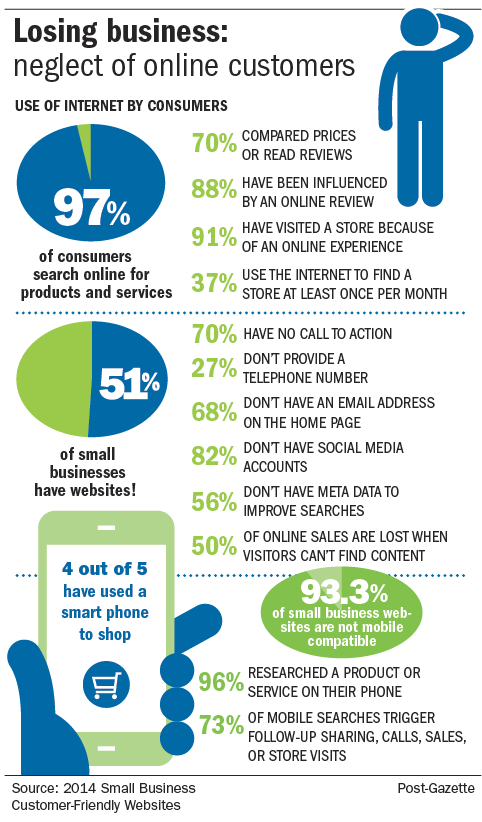
Every business endeavors to enhance product visibility, expand into new markets while protecting the market share within its fold. Accomplishing this feat is not easy owing to the cutthroat competition experienced domestically and on the international scale. Radio and TV charge per second billing and ad expenditure often goes into prohibitive amounts that small and mid-sized companies may not afford. Thanks to the Information Age, reaching out to clients is now considerably cheaper and can reach millions of people across the world in real time. What’s more, advertising through the internet is by far much cheaper than advertising through mainstream media. So, then, what strategies to attract customers should companies employ to win and retain clients in the online realm?
1. Accessibility
The first rule of thumb for any business that hopes to attract more people is to become available round the clock and ensure no barriers will impede this. Being reachable paves the way for audiences to speak directly to you posing questions, concerns, making suggestions, or merely leaving a comment. This first line of communication must remain open through telephone, website, social media, and a physical customer service desk. it is paramount to establish a robust customer support infrastructure complete with highly trained staff that are adept at addressing queries. By doing so, businesses are in the know about what customers think and desire, and this improves their likeability score. Failure to do so or delays in communication makes the industry lose credibility and recovery from such lows may not be forthcoming.
2. Product Reliability
Having an active online presence is a no brainer, but this platform has the potential of adverse outcomes with far-reaching consequences. In industry terms, this is bad press, and we have seen numerous brands hurt by this and entire businesses tank as a result. In 2014, CNN did a groundbreaking documentary dubbed “Blackfish” where it highlighted less than stellar habitats for the world-famous Orca whales at SeaWorld.
After this documentary went viral, there was public outrage, and PETA demanded the release of these whales from captivity. SeaWorld’s stock value plummeted by 33%, and so did its revenue. All this to show that businesses must have a genuine product and practice ethically sound business practices as falling short of that is detrimental to their image.

3. Website Audit
Growing a robust online presence must start with having an updated site that is an accurate reflection of who you are regarding products, management, mission and vision, contact details, etc. Unfortunately, Forbes derived that just 51% of small enterprises have a website up and running which is dumbfounding. Consider this, 97% of internet users are reported to find goods and services online through the company’s website.
Find a professional to conduct a website audit and troubleshoot any issues therein and consider investing in web hosting services. Compare and select hosting that suits your needs most bearing in mind fast loading speeds.
4. Search Engine Optimization
It is not enough to just put up a website; it needs to be optimized for mobile devices and must improve customer experience. Industry pundits projected that 2019 would be a great year for SEO and therefore, companies need to maximize their content accordingly. Google is the leading search engine taking a market share of (92.59%) mobile searches and (72.78%) desktop searches, as per SEO Tribunal. Therefore, optimize your content for search engines such as Google and Bing to draw organic traffic to the website.

5. Consistency
Another good marketing strategy to attract customers is by being consistent with your online activities. Consistency could mean scheduling blog posts, social media content, newsletters, collaboration with brand influencers, and so on. If clients know what to expect and when they are more inclined to stay tuned thereby increasing the possibilities of sale conversion. Nevertheless, businesses must be wary of information overload and instead find an equilibrium between consistent churning of content and quality. You can do this by devising a well-informed content strategy based on market research on your pool of current and prospective clients. If you don’t have a budget for market research endeavors, you can still gather valuable data by asking questions on social media platforms. Once you have a sound content strategy, document it accurately and share with relevant teams for their consideration.
6. Select Channels
It is very tempting for companies to want to increase their online presence by covering the realm of social media. While this approach is commendable in some circumstances, stretching yourself too thin may water down your well-meaning efforts and even put off some people. For instance, a business that specializes in office apparel need not have an active account on SnapChat. Running an Instagram and Facebook account may be perfectly fine for the demographic they wish to appeal to such as millennials in the labor force. More so, apply the 80 – 20 rule where your efforts should culminate to 20% while the rest 80% is people spreading the word.
On the whole, companies thriving in the current business atmosphere need to keep abreast with the latest trends and industry changes. Perception is vital and so is making meaningful connections with clients through social media. Set your boundaries to avoid overdoing things as this makes the brand look cheap and commune with your audience habitually.
